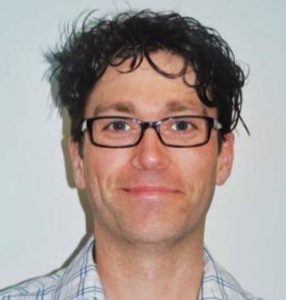A chemistry graduate student presenting a research talk would usually expect an audience from their close circle of chemistry colleagues studying a similar topic. However, when the research is about pollutants and chemical processes that affect air quality, climate, and health, the audience can draw in many more experts: chemists, engineers, and specialists in public health, computer modeling, geography, and policy.
In a UBC training program called CREATE-AAP (Collaborative Research and Training Experience – Atmospheric Aerosol Program), students learn to close the gap between researchers in a variety of areas who all study the particles in our atmosphere we call aerosols. The aim is for students in the program to communicate with scholars from outside their disciplines, and as a result, cultivate a broader understanding of the interrelatedness of concepts involving atmospheric aerosols, an integral skill required to tackle key environmental problems.
Some CREATE-AAP activities designed to give students opportunities to gain communication-focused competencies include:
- an annual symposium to share research in poster sessions and research talks with guest speakers from industry, government, and academia;
- an annual student seminar conference to present internship results and experiences that represent labs of other aerosol research groups at UBC;
- a graduate-level seminar course (CHEM540D) and a bi-weekly journal club to read and discuss diverse journal literature in an interdisciplinary group; and
- professional skills training workshops to enhance skills in public speaking, media communications, teaching, and project management.
These events regularly bring together students from up to six different departments at UBC.
As CREATE-AAP students take part in these activities, they exchange feedback on what works and what does not work in cross-discipline science communication. Take a scene in CHEM540D, the seminar course designed for the CREATE-AAP program’s graduate students. In a CHEM540D class, the audience lacks a common knowledge base of atmospheric chemistry, so a phrase such as “heterogeneous ice nucleation” has to be defined or it can lose the audience. Highly technical language is expected in a talk for chemistry colleagues or for scientific journals, but to an audience unfamiliar with the topic, technical knowledge can instead be introduced with clear visuals, logical flow, and adequate pacing. The challenge is to provide enough detail and depth without overwhelming their audience with jargon and acronyms.
When CREATE-AAP students practice adapting their language to a more general audience, they also learn to understand and relate perspectives from other disciplines into their own. For example, students studying the public health impacts around cookstove emissions in rural communities could relate to another student’s research focused on the mitigation perspective of the same topic. A geography student monitoring air pollution may collaborate with a chemistry student to analyze the composition and transport of pollutants. Learning to engage in interdisciplinary teams is a highly sought skill for employers in the environmental and health sectors.
Through exposure to other disciplines, CREATE-AAP students hone their interdisciplinary communication skills and underpin their expertise with a deeper appreciation of the range of perspectives on atmospheric aerosol research. When these students in chemistry, engineering, medicine, atmospheric sciences, or resource management walk into another research talk, they can all hope to see the relevance of each others’ works to their own studies and a better understanding of air quality, health, and climate.
 Allan Bertram is the Director of CREATE-AAP, an interdisciplinary atmospheric aerosol program funded through the NSERC CREATE program (2010-present). He is a professor in the Department of Chemistry at University British Columbia and serves as co-editor of Atmospheric Chemistry and Physics (2013 – present). He is also the 2016 winner of the Environment Division Research and Development Dima Award for distinguished contributions to research and/or development in the fields of environmental chemistry or environmental chemical engineering, while working in Canada. The research in his group focuses on the chemistry and physics of atmospheric particles and the role these particles play in urban air pollution, climate change and atmospheric chemistry.
Allan Bertram is the Director of CREATE-AAP, an interdisciplinary atmospheric aerosol program funded through the NSERC CREATE program (2010-present). He is a professor in the Department of Chemistry at University British Columbia and serves as co-editor of Atmospheric Chemistry and Physics (2013 – present). He is also the 2016 winner of the Environment Division Research and Development Dima Award for distinguished contributions to research and/or development in the fields of environmental chemistry or environmental chemical engineering, while working in Canada. The research in his group focuses on the chemistry and physics of atmospheric particles and the role these particles play in urban air pollution, climate change and atmospheric chemistry.
 Maki Sumitani was Program Coordinator for CREATE-AAP (2013-2016), and is a UBC Science alumna with a keen interest in science writing and communication.
Maki Sumitani was Program Coordinator for CREATE-AAP (2013-2016), and is a UBC Science alumna with a keen interest in science writing and communication.
Currently, Maki works with UBC Applied Science programs (engineering co-op, study abroad, and professional development) and is working towards certification in professional communication.

Thanks a lot for your post.
Great post, thanks a lot.
Perfect, thanks.
Thanks alot.
Lovely really thanks.
Perfect, thanks.
Thanks a lot.
Lovely, thanks.
Thanks a lot.
Great, really thanks.
Thank you very much.
thanks a lot.
Perfect, thanks.
Lovely thanks.
Great post thanks.
Thanks a lot.
Perfect thanks.
Perfect lovely.
Great thanks a lot.
Thanks a lot.
Great post thanks a lot.
Great thanks a lot.
Thanks a lot.
Thanks a lot.
Perfect thanks.
Great thanks a lot.
perfect thanks.
I found so many interesting stuff in your blog especially its discussion. From the tons of comments on your articles, I guess I am not the only one having all the enjoyment here! keep up the good work.
The blog is extremely obvious and I like to continue visiting this website indeed that it would help me in further a debt of gratitude is in order for sharing the data.
This is an awesome motivating article. I am practically satisfied with your great work. You put truly extremely accommodating data. Keep it up. Continue blogging Hoping to perusing your next post.
This blog is what I was looking for. This piece of content will really help me. Thanks for sharing it.
Hi! I’d have to check site here. Which is not something I usually do! I enjoyed this one.
This is also a very good article which I really enjoy reading. Keep writing, thanks!
Nice article and nice urging commented at this place, I am truly enjoying by these.
Nice article and nice urging commented at this place, I am truly enjoying by these.
I enjoy this kinds of own post. It Like this knowledgeable blog.
THANKS FOR THIS BEAUTIFUL ARTICLE AND SO MUCH REALLY GREAT INFO ABOUT THIS.
I REALLY JUST WANT TO READ THIS KIND OF POST BECAUSE THIS KIND POST IS VERY HELPFUL.
THANKS FOR SHARING THIS POST, HAVE A GREAT AND WONDERFUL DAY TO EVERYONE!
I believe it is a lucky site
I think the article “Integrating science communication training into an interdisciplinary program on atmospheric aerosols” is an excellent example of how science communication can bridge the gap between different disciplines. The CREATE-AAP program at UBC is doing a great job of training students to communicate their research to a wider audience, and I think this is essential for tackling key environmental problems. The article points out that it is a necessity to provide enough detail without overwhelming the audience with jargon and acronyms. This is a challenge many scientists face, and I think the CREATE-AAP program provides students with the skills they need to overcome this challenge.
I’m really glad I have found this information. Today bloggers publish only about gossips and internet and this is actually frustrating. A good web site with exciting content, this is what I need. Thanks for keeping this web site, I’ll be visiting it.
In the realm of dreams, gold holds profound symbolic significance, often rooted in various cultural and spiritual contexts, including the Bible. Gold has been regarded as a precious and valuable metal throughout human history, and its symbolism within the Bible is rich and multifaceted. In dreams, the appearance of gold can carry deep spiritual messages, often reflecting themes of purity, divine favor, and spiritual transformation.
Hi there I am so excited I found your blog page, I really found you by acciden
I WISH YOU WILL POST MORE OF THIS, THANKS FOR YOUR KINDNESS IDEA. THANK YOU!
Day porter services offer comprehensive, on-site cleaning and maintenance throughout the day, ensuring a pristine and well-managed environment. These services include routine tasks such as tidying common areas, restocking supplies, and addressing spills or messes as they occur. Day porters are crucial for maintaining a professional and welcoming atmosphere in high-traffic locations like office buildings, shopping centers, and event venues.
#Regularly writing blogs is a habit of mine, and I must admit, your content is truly remarkable.
야놀자클라우드솔루션, 인도 R&D 센터 확장 이전 \
thanks for more inofrmation
Hi, You have done an excellent job. Lot will be benefited in this web site… MM